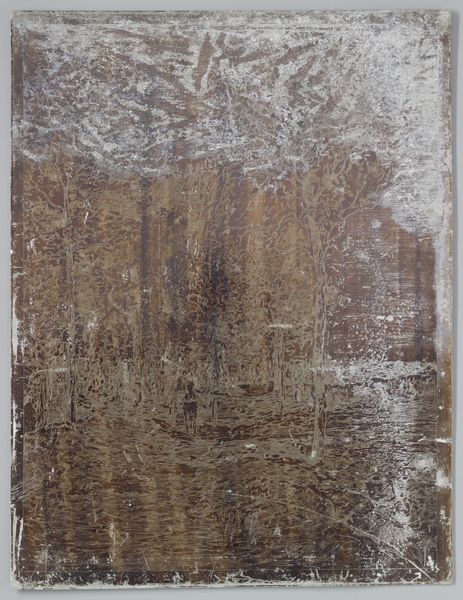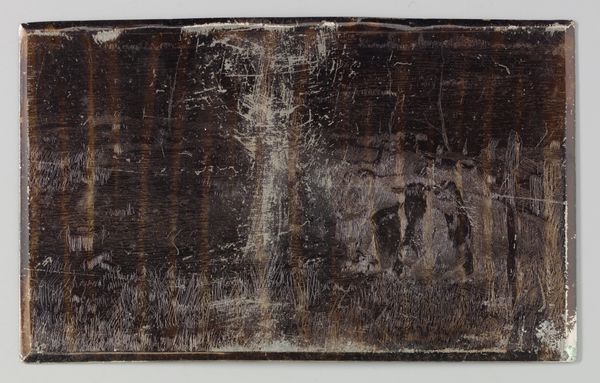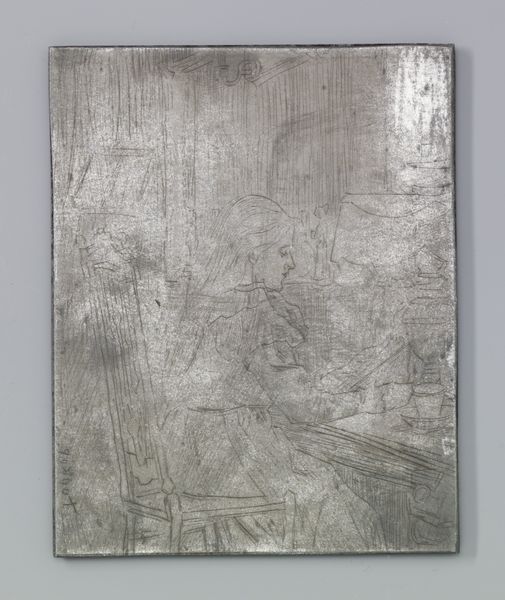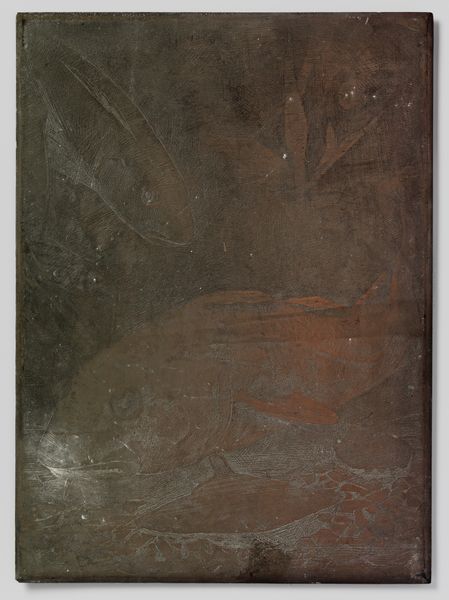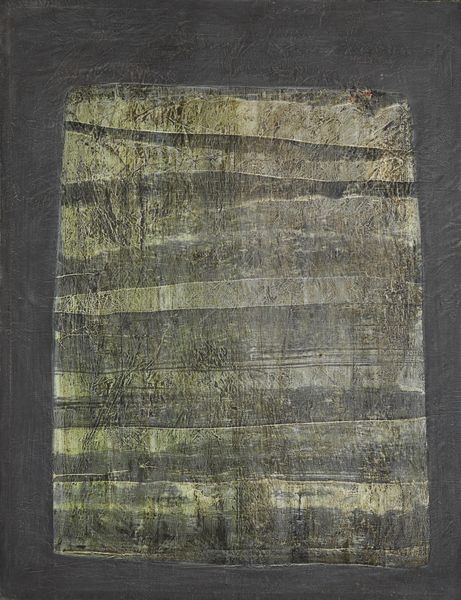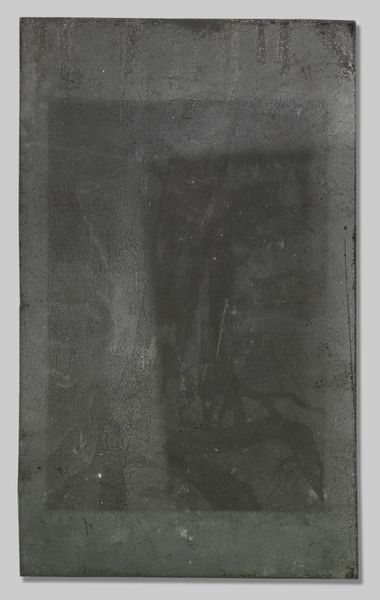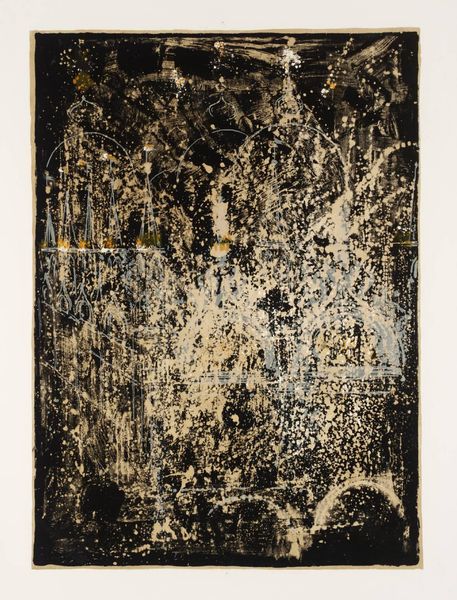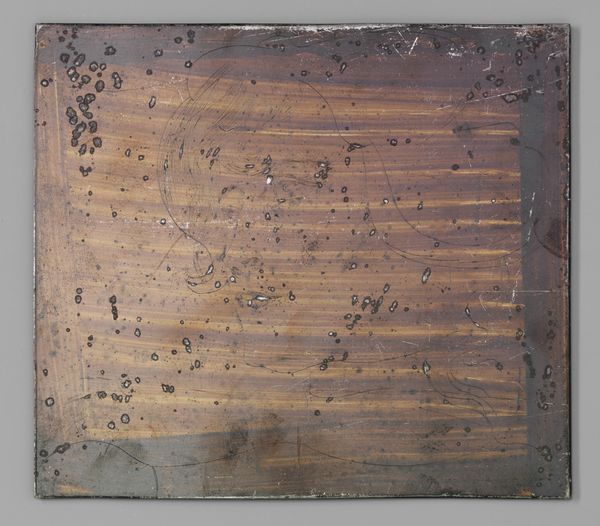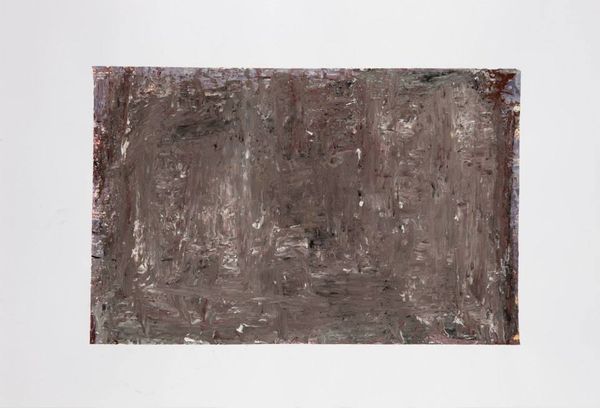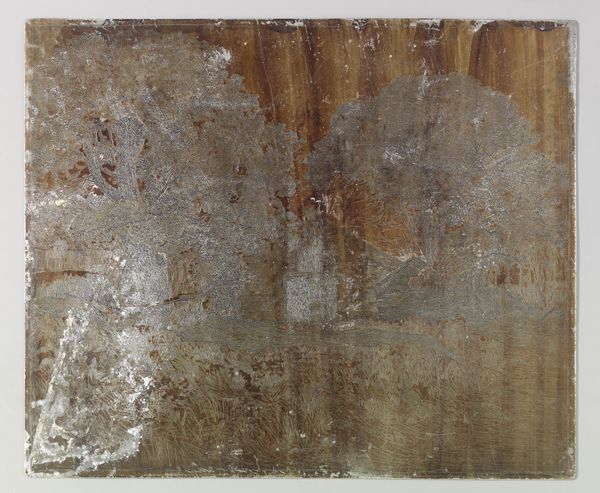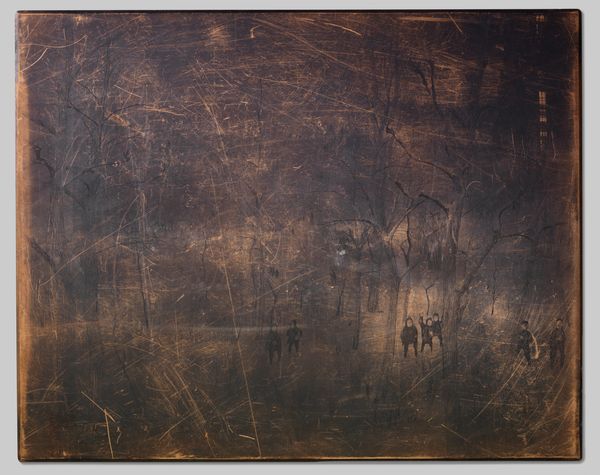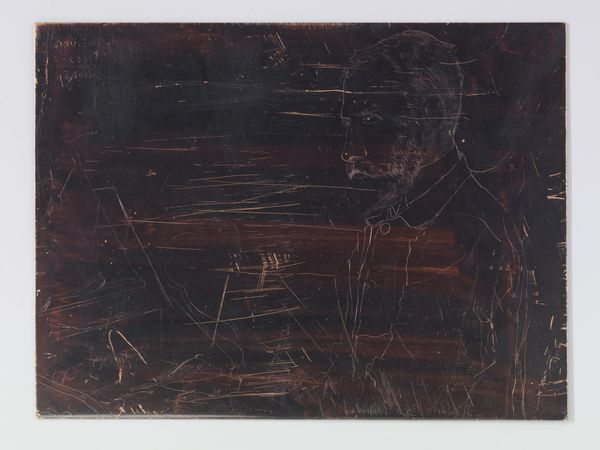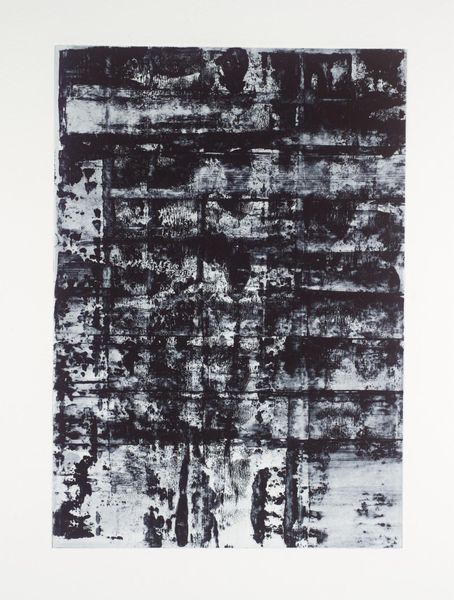
matter-painting, painting, impasto
#
matter-painting
#
painting
#
impasto
#
abstraction
#
monochrome
Dimensions: height 230 mm, width 200 mm
Copyright: Rijks Museum: Open Domain
Curator: My first impression is of raw energy, or perhaps repressed chaos trying to claw its way out of something so dark, wouldn't you say? Editor: We're looking at "St. Nicolaaskerk te Amsterdam" by Pieter Dupont, dating from 1894-1895. The medium here is really crucial; it’s a matter-painting employing impasto. Curator: Oh, “matter-painting,” you say? Matter is right! It’s as though Dupont wrestled with mud and light to pull this scene, this feeling, into being. And impasto! It’s practically sculpture, isn't it? Those thickly layered strokes fighting against each other... Editor: Exactly! It showcases Dupont's process, challenging the conventional separation between skilled artisanship and artistic expression. What you perceive as struggle might arise from a complex process, the physical labor embedded in dragging and layering paint. Consider, for instance, that single color may belie multiple materials and steps involved. Curator: Ah, but maybe that very labor informs the piece? I almost feel as if I'm gazing not at a building, but at the memory of one. Like a phantom limb throbbing with the ache of what was, of rituals and lives intertwined with the very stone and mortar... all simplified, yet resonating. It gives the monochrome new meaning. Editor: Yes, and that monochrome demands that we reconsider not just the artist’s expression but the entire system that makes such works, with its complex histories, pigments obtained globally, craft traditions, and economics of art production. The very color is not separate from but intrinsic to all this context. Curator: It’s not merely monochrome; it's an invitation to truly feel with one's own sense of touch, even though touch is prohibited by the museum's rules. And isn't that ironic? To have a sensory experience presented in such an anti-sensory environment? I would imagine this is where our own creative expression begins to awaken. Editor: True. This directs our thought to the fact that the abstraction isn’t a retreat from but a direct engagement with the materials and circumstances in which the work appeared. That impasto, and how Dupont wielded those tools! This could challenge the long standing divisions within art historical practice between "high art" and seemingly lowlier areas of craft and labor studies. Curator: So in essence, you suggest this piece pushes us to recognize the physical labor that often goes unseen behind creativity, blurring the lines between idea and action. Now, it makes me wonder about Dupont. What would it mean to view art as work rather than the other way around? Editor: Well, there's a lot here about production. Let’s keep pondering this.
Comments
No comments
Be the first to comment and join the conversation on the ultimate creative platform.
